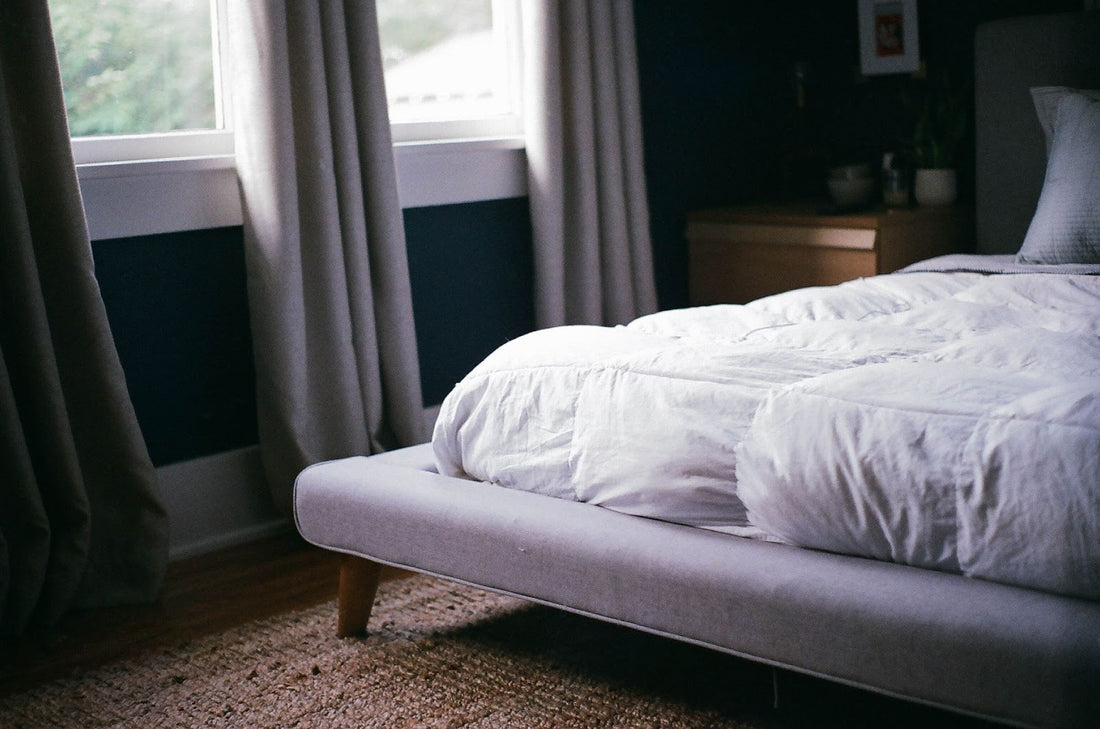I think it's safe to say that dust mites are something we would rather not think about unless we really have to. However domestic populations can get out of control, allergies can develop, especially in children, and it's better to be armed with a little information before we call in the fumigators and wipe out everything within a 30 metre radius.
Dust mites are actually helpful little scavengers, cleaning up all sorts of slightly gross things like dead skin cells, on a microscopic level. They belong to the spider family but they don't bite or do any deliberate harm. They are not airborne and are completely harmless unless you suffer from asthma, eczema or have a specific allergy to them. It's good to know that every single home has them to some degree, you won't ever get rid of them, and you probably wouldn't want to. But you can manage them and keep populations to a minimum so that even someone with a severe allergy can live with them in peace.
Dust Mite Facts
Getting to know a dust mite better will give you some clues as to how to manage them and may help you like them just a little:
- They live in the dust. If you can see dust then you can be assured that dust mites are there too.
- Dust mites lay 1 - 3 eggs a day that will take 6 - 12 days to hatch. From lava to adulthood takes about 6 - 8 weeks.
- They discard skins as they grow and mature, and it's these skins and dust mite faeces that become airborne and create issues for allergy sufferers.
- Dust mites can live in any climate but they are especially fond of warm humid conditions. The perfect day for a dust mite is 20 - 25 ℃ with a humidity at 70 - 80 %.
- They thrive in bedding, carpets, soft furnishings, cushions and soft toys. You'll find them anywhere where moisture and warmth can be trapped.
- Despite considerable research resources, important knowledge gaps and misconceptions remain when it comes to dust mites, aspects of their biology and importantly, a full picture of their ecology.
Dust Mite Allergy Symptoms
Dust will make anyone sneeze and fortunately only some people will be sneezing because of allergies. Keeping your eye out for the following symptoms, especially if they are worse when at home, at night, when you vacuum or when you change the sheets can be helpful guide:
- Itchy, runny nose or chronic nasal congestion
- Sinus pressure
- Postnasal drip
- Itchy red eyes
- Excess blinking
- Scratchy throat or dry cough
- Itchy skin
You'll notice that these are mostly upper respiratory issues and that's because the body's immune system kicks into gear when airborne dust mite irritants are inhaled. Our body produces antibodies to fight them off, the overproduction of which is what we call an allergic response. Dust mite allergies affect 10 - 15% of Australians and 80% of all allergy sufferers. If you are sensitive generally they may also be contributing to your hayfever episodes. Long term exposure increases the risk of sinus infections and asthma, especially in children, so it's well worth seeing an allergy specialist if any of the above symptoms seem to be persisting.
Dust Mite Allergy Treatment
Medical options such as antihistamines, nasal sprays and decongestants are the usual first step in managing a dust mite allergy. These short term options will help to relieve the symptoms while you get the dust mite population under control. Limiting your exposure is really the best course of long term treatment for a dust mite allergy.
Dust Mite Prevention
The good news is that unlike allergies from pollen or pollutants, dust mites are relatively easy to control with a few simple domestic protocols to clean them up and create effective barriers:
-
Be a minimalist
Declutter the house to decrease potential colonies. Remove any excess carpets, floor rugs, cushions, blankets, stuffed toys and soft furnishings. Replace curtains with blinds that can be wiped down and, if possible, replace carpeted floors with a hard surface alternative that can be vacuumed and mopped. -
Bedrooms, bedding, bed sheets & mattress covers
The bedroom, and especially your bed, is the number one best address for a dust mite. A warm, moist environment with people curled up naturally shedding skin cells for eight hours at a stretch. Perfect! Managing dust in and around your sleeping environment will be critical to your dust mite allergy management.
- Purchasing hypoallergenic bed sheets made from Tencel or organic cotton will serve as an effective barrier making the bed far less attractive to a dust mite.
- Using a zippered, allergy proof mattress and box spring cover will provide a fantastic barrier for any mites that have taken up residence in the mattress itself. Look for a cover made of Tencel or organic cotton with a tight weave.
- Source hypoallergenic pillow covers and replace any dusty old pillows.
- Remove all stuffed toys and excess cushions from the bed.
- Remove anything you have stored under the bed. It's all a potential dust mite trap.
-
Tips for the laundry
A good laundry protocol is essential for dust mite management as dust mites and dust mite larvae cannot survive a hot wash, hot dryer cycle or a day on the line in the sun.
- Clean curtains and all upholstery monthly.
- Wash sheets and pillowcases weekly in hot water (50+ ℃) and add a few drops of Tea Tree, Eucalyptus or Lavender oil to the wash for some extra antibacterial punch.
- On alternate weeks wash or sun your blankets, mattress covers, doonas and other bedding
- Hot wash stuffed toys regularly. If you can't wash them, freeze them overnight for similar results. It won't get the mites that are already in there out, but it will kill any living in the toy and put an end to the breeding cycle.
- A good laundry rule is + 50 ℃ water temperature with a 10 minute pre-wash soak.
-
Reduce humidity
Consider a dehumidifier if you live in a humid climate. A good rule of thumb is to look out for mould as an indicator of excess humidity. Opening the windows daily for maximum airflow in your home will help. Or consider installing a fan to help move the air around. - Room temperature
Increase or decrease the temperature of the room to below 19℃ or above 26℃ to make the whole environment less comfortable for the dust mites. To promote a better night's sleep, cool down rather than warm up. -
Vacuum regularly
A good house cleaning protocol done on a regular basis will keep dust and mites at bay. A few things to consider might be:
- Replacing your brooms with a vacuum cleaner and vacuuming floors and upholstery at least once a week. If the allergy is severe you may want to consider the addition of a HEPA filter.
- Every season give your mattress a thorough high powered vacuum.
- Purchase a steam mop for your floors.
- Make a spray bottle with 3 - 4 drops of antibacterial essential oils such as Tea Tree, Lavender or Eucalyptus for fabrics and hard surfaces.
- Dust twice a week with a damp or oiled cloth to collect dust rather than using a dry one that will disperse dust into the air.
Getting on top of a dust mite problem might take a little work at first but once you get through the big initial clean it will settle into familiar maintenance, and most allergy sufferers will need to have a good protocol in place out of necessity. Keeping dust down generally in the house, and being aware of specific dust mite management in the bedroom, can have a big impact on the level of comfort experienced by an allergy sufferer, their quality of sleep, and the extent to which medications are required. Every creature in the biological chain is important and dust mites are necessary microscopic helpers. Most of the time, when populations are under control, they are easy going housemates who don't take up much space and won't leave crumbs on the kitchen counter.





